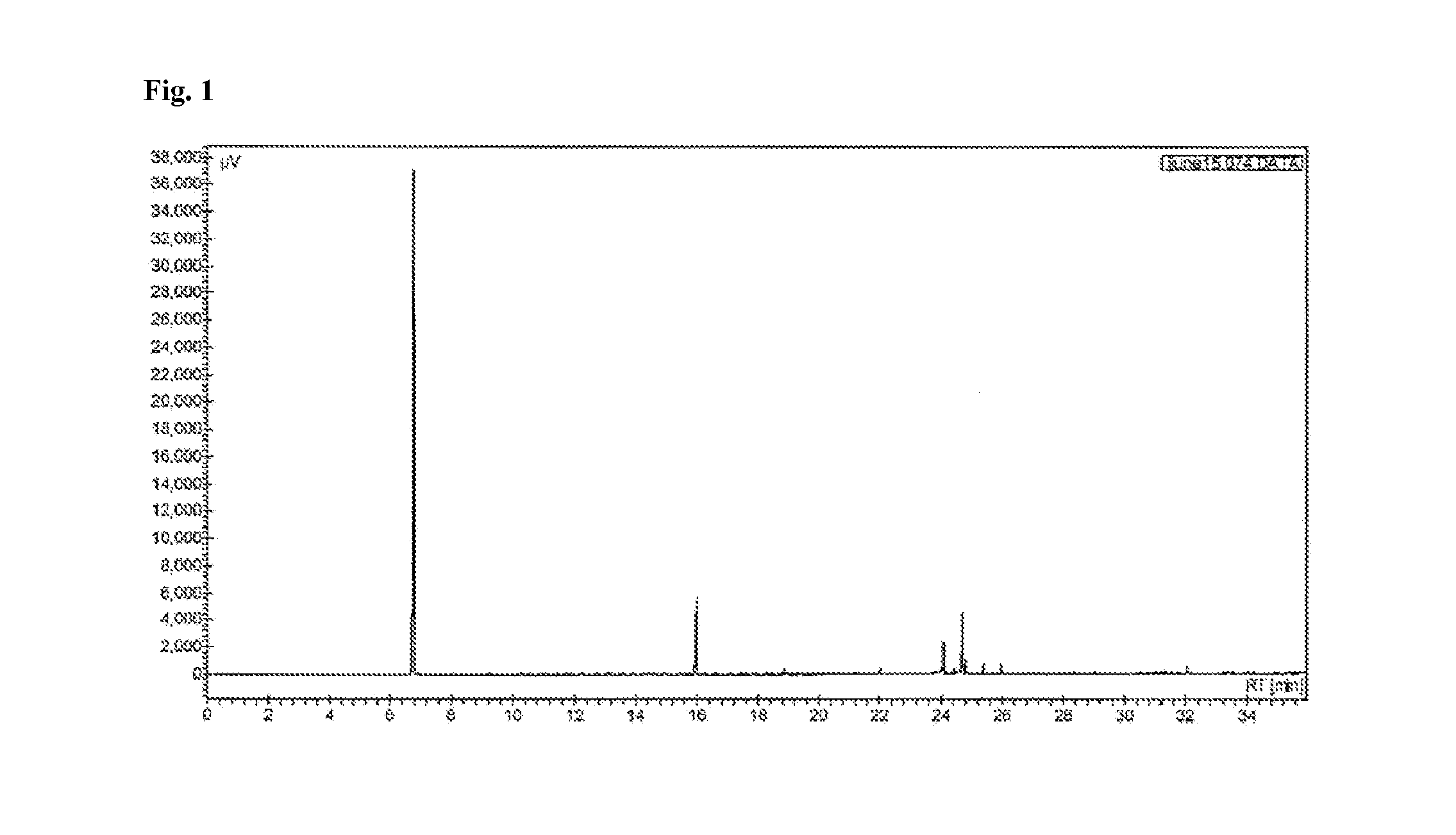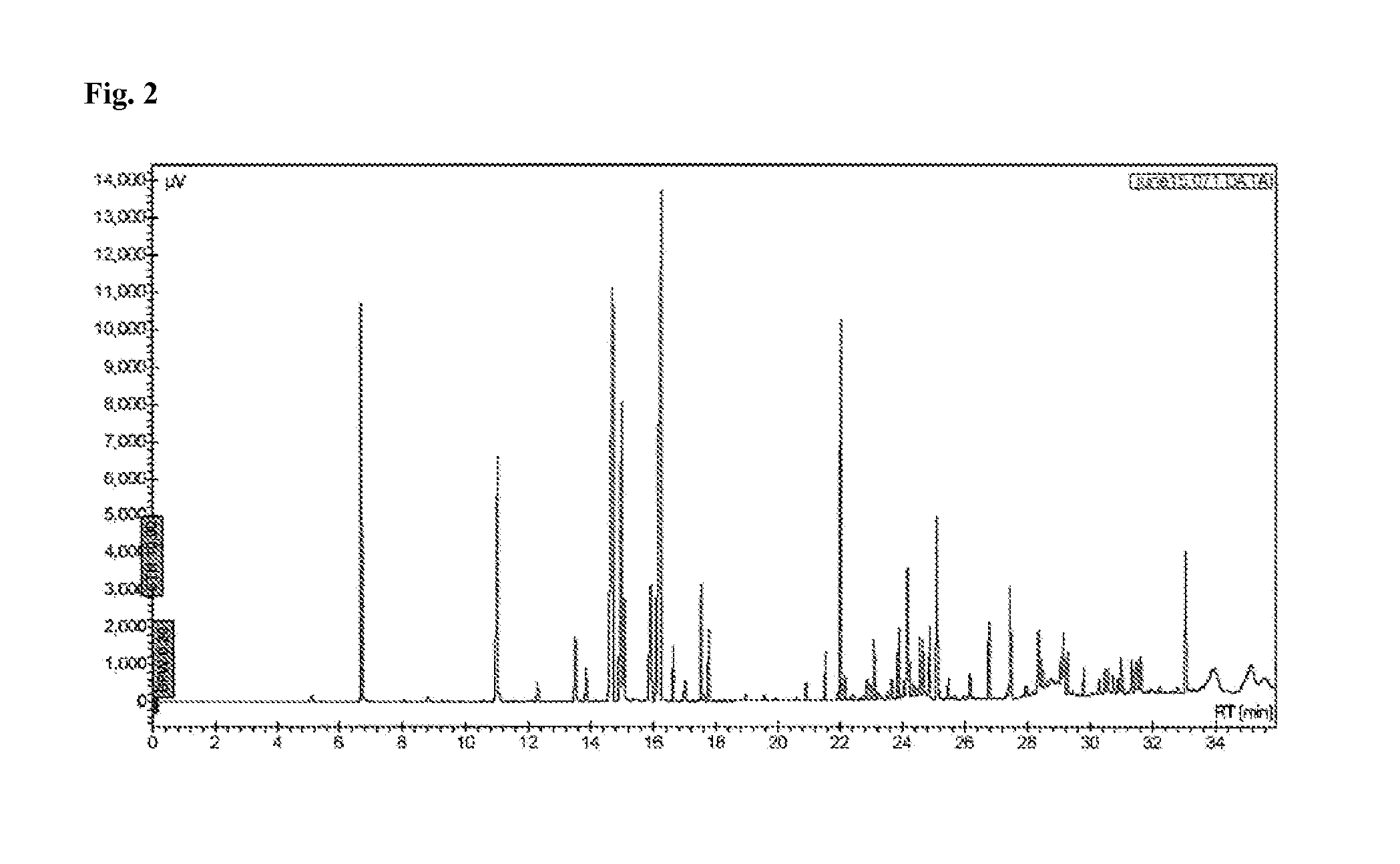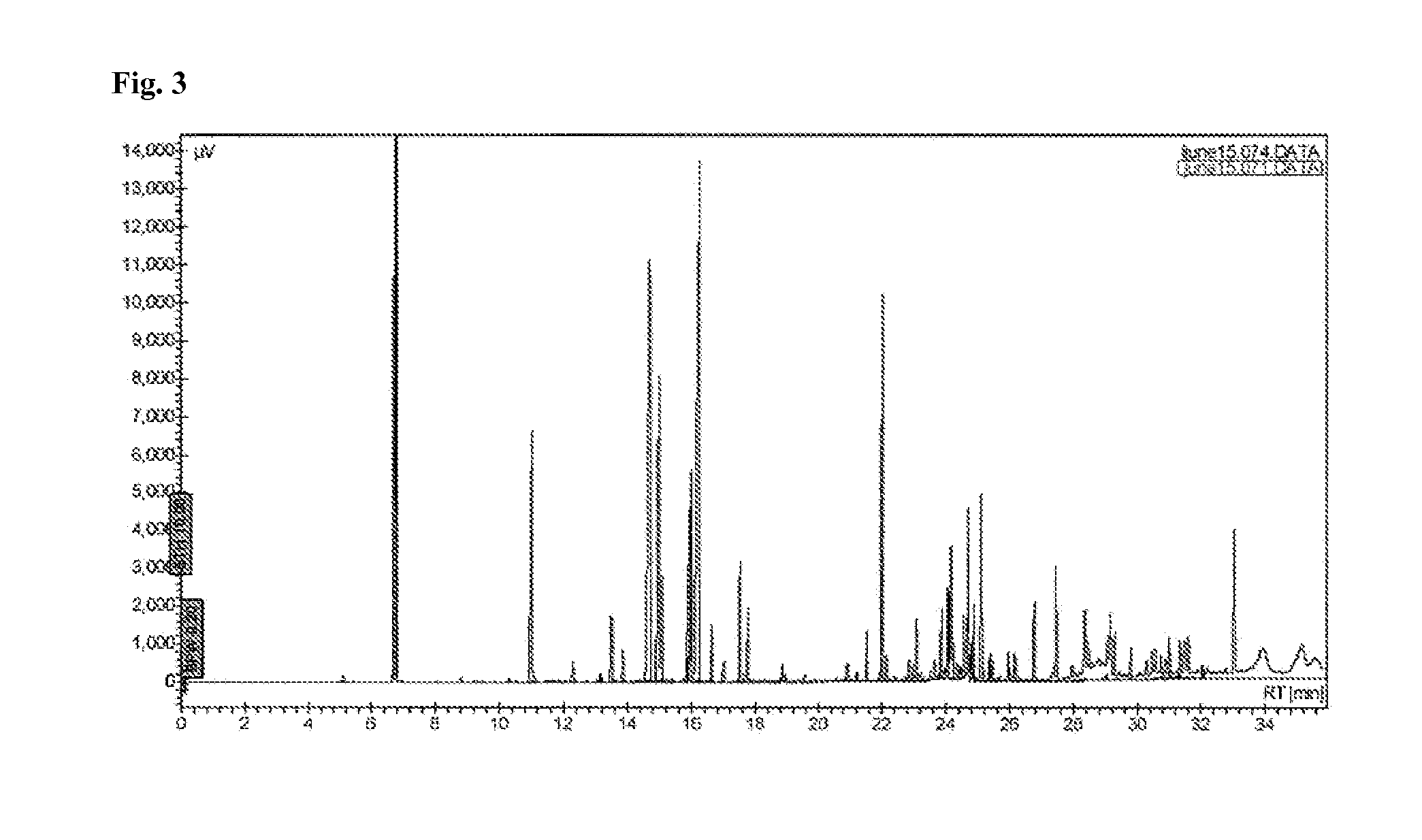Methods of controlling the breeding behavior of butterflies
a technology of breeding behavior and butterfly, applied in the direction of plant ingredients, biocide, plant growth regulators, etc., can solve the problems of being a significant pest, being less capable, and vulnerable to young seedlings
- Summary
- Abstract
- Description
- Claims
- Application Information
AI Technical Summary
Benefits of technology
Problems solved by technology
Method used
Image
Examples
example 1
[0090]To rear H. andraemon larvae on citrus plants and Piper amalago var. amalago plants, 77 larvae were laid on various citrus plant species, including lime plant, Citrus sinensis (sweet orange), and Citrus reticulata (Mandarin orange). The larvae were then manually removed and reared on Piper amalago var. amalago plants. The larvae were transferred at different stages, but early in their life cycles (first, second, or third instars). Measurements of the widths of the broadest part of the pupae were measured, and time to pupation was taken to determine host plant suitability. The larvae were placed in a cage of about 3 meters by 3 meters by 2.5 meters and were exposed to normal ambient environmental conditions. Statistical analysis was used to determine whether there were significant differences between the size of the larvae bred on Piper amalago var. amalago plant and citrus plants.
[0091]Time to pupation was determined by noting the time taken for larvae to pupate after hatching ...
example 2
[0093]Fresh whole leaves of lime plant and Piper amalago var. amalago plant were used to extract oil for application to host plants. The leaves were then hydrodistilled for up to 4 hours using a Clevenger-type apparatus. The oils were collected during distillation at one hour intervals, and were dried over anhydrous sodium sulfate to yield substantially clear oils. Extractions were done in triplicate and the average values were used. The oils were weighed and stored at 5° C.
[0094]Hydrodistilling 952.7 g of lime plant yielded 1.44 g of oil, 0.151% by weight; 378.6 g of Piper plant yielded 0.446 g of oil, 0.085% by weight; 193.2 g Citrus sinensis leaves yielded 0.782 g of oil, 0.405% by weight; 794 g of P. amalago, var. nigrinodum leaves yielded 0.719 g of oil, 0.091% by weight; and 207.9 g of Zanthoxylum martinicense leaves yielded 0.0365 g of oil, 0.0176% by weight.
[0095]A Varian CP-3800 gas chromatograph interfaced with a Flame ionization detector (FID) was used to analyze the extr...
example 3
[0101]To determine the suitability of Piper amalago var. amalago plant as a host plant, the size of larvae were compared after feeding on either Piper amalago var. amalago plant or lime plant. In this experiment, larvae were reared on Piper amalago var. amalago plant or lime plant to compare the size of the larvae after they fed on one of either plant.
TABLE 2Comparison of pupae size (mm)Pupae bred on Piper amalagoPupae bred onvar. amalago plantcitrus plantPopulation size:77 72 Mean width:8.710 mm.8.853 mm.Standard Deviation:1.03541.0978
[0102]The results, reflected in Table 2, show that the difference in the mean widths of pupae bred on Piper plant and lime plant was minimal at about 0.1 mm. The Levene's test for equality of variance indicated that the variance in size were not significantly different (p=0.432). Because no significant difference was found between the size of pupae bred on Piper amalago var. amalago plant versus lime plant, Piper amalago var. amalago plant was d...
PUM
 Login to View More
Login to View More Abstract
Description
Claims
Application Information
 Login to View More
Login to View More - R&D
- Intellectual Property
- Life Sciences
- Materials
- Tech Scout
- Unparalleled Data Quality
- Higher Quality Content
- 60% Fewer Hallucinations
Browse by: Latest US Patents, China's latest patents, Technical Efficacy Thesaurus, Application Domain, Technology Topic, Popular Technical Reports.
© 2025 PatSnap. All rights reserved.Legal|Privacy policy|Modern Slavery Act Transparency Statement|Sitemap|About US| Contact US: help@patsnap.com



